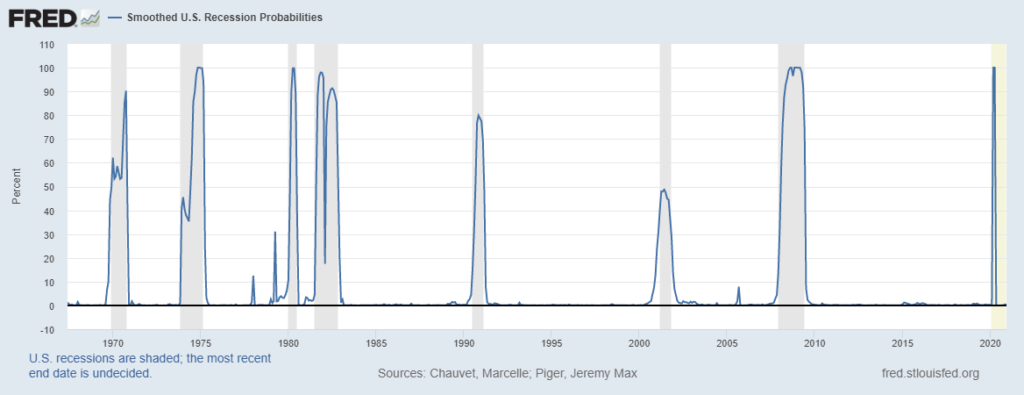As Congress races to a deal on $1.9 trillion in stimulus spending, it’s important to consider what previous rounds of stimulus accomplished.
Less than a year ago, the economy was shutting down, and the prospects of reopening were dim.
Skeptics warned that vaccines took years to develop. In March, The New York Times warned that “Big Pharma May Pose an Obstacle to Vaccine Development,” and the now-famous Dr. Fauci said that getting a vaccine ready in a year or so “would be the world’s indoor record of ever getting a vaccine out.”
Against this backdrop, economists said that the recession would be deep and warned that unemployment was likely to be above 9% at this time.
Instead of doom, millions have already received the vaccine, unemployment is at 6.3%, and the economy appears to be recovering.
A reliable model the Federal Reserve maintains indicates the pandemic-induced recession is likely over. As shown in the chart below, the probability of a recession in the next six months is 0.28%.
U.S Recession Probability

Source: Federal Reserve.
More Stimulus May Not Lower Recession Risk
This complex model uses data on employment, industrial production, personal income and manufacturing and trade sales. Since it was first published in 1998, the model has proven to be highly accurate.
The low probability of recession indicates the stimulus packages already passed, combined with generous Fed policies, a vaccine and reopening the economy, have decreased economic risks.
This model uses existing data and doesn’t include the potential impact of nearly $2 trillion in new spending. Critics of the program contend that enhanced unemployment benefits could provide a disincentive to work while the massive spending could be inflationary.
The Fed’s data highlights that the critics have valid points. There are risks associated with passing the stimulus bill since the economy is largely in recovery. Maybe the social safety net could be expanded, but the bill seems excessive given current conditions.
Michael Carr is a Chartered Market Technician for Banyan Hill Publishing and the Editor of One Trade, Peak Velocity Trader and Precision Profits. He teaches technical analysis and quantitative technical analysis at the New York Institute of Finance. Mr. Carr is also the former editor of the CMT Association newsletter, Technically Speaking.
Follow him on Twitter @MichaelCarrGuru.




